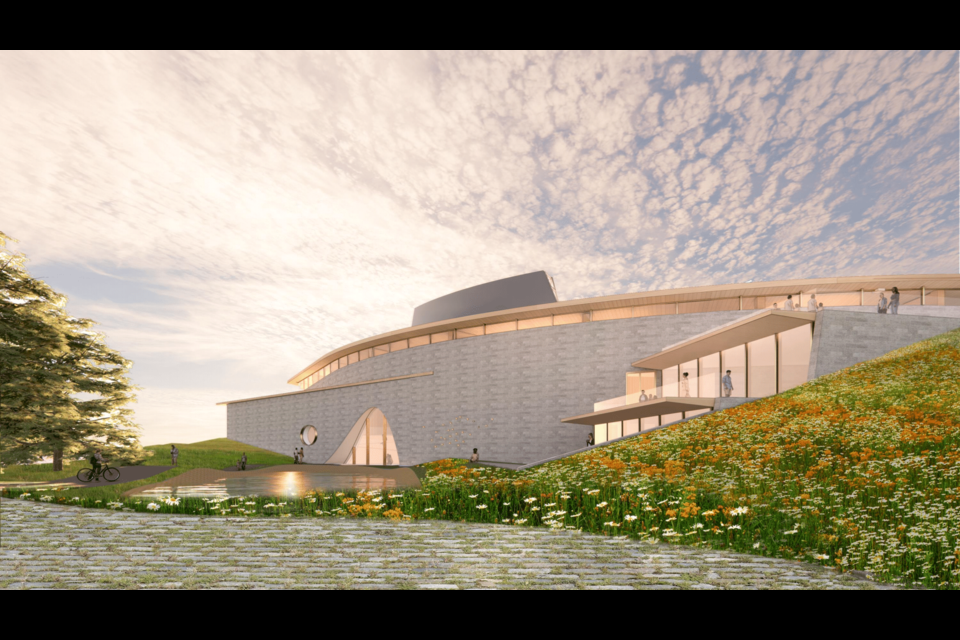THUNDER BAY — Science North has unveiled an $80-million price tag and other new details about its proposed Thunder Bay science centre.
Science North CEO Ashley Larose presented the organization’s vision for the 3,850-square-metre facility to city council on Monday, saying it would serve as a tourist draw and an entertainment hub for locals, and boost science education with innovative approaches.
“What we are really presenting here is the next generation of what a science centre can be,” she said.
Science North announced Pool 6 as its preferred site for a proposed science centre last summer, a prospect that’s been widely welcomed by local leaders.
Larose told council Science North hopes to begin construction as soon as mid-2025, with a potential opening date in 2027.
The arm's-length provincial agency aims to achieve carbon neutrality with the new build.
The project remains in the schematic design phase and has not yet secured funding toward its $80-million build, though Larose said Science North has now submitted two federal funding applications.
The project has already attracted over $2 million in support from all three levels of government for preparatory work like feasibility studies.
On Monday, Larose pointed to the results of those studies, arguing her organization has already built a strong case for a Thunder Bay science centre.
The organization “conservatively” estimates the centre could draw 60,000 visitors a year, including 20,000 tourists.
Larose called Thunder Bay a “more modest market” where regularly renewing exhibits at the centre will be key in order to lure back hometown visitors for return trips.
Science North has shared estimates of a $6-million annual local economic impact through science centre operations and visitor spending, and $45 million in local “value-added benefits” as a result of construction.
The centre would employ 12 people full-time and 12 part-time, in addition to 66 full-time equivalent positions Science North said would be supported through annual visitor spending and operations.
Science North is developing the project alongside a potential expansion of the Lake of the Woods Discovery Centre in Kenora.
Councillors welcomed the project Monday, calling it an anchor for further waterfront development and a potentially huge draw for both locals and visitors.
“It’s going to be a great facility,” said Coun. Mark Bentz. “Any community that has a science centre is very, very lucky.”
While recognizing tourism and economic benefits, Coun. Andrew Foulds said leaders also shouldn’t lose sight of the centre’s public education mandate.
“My other job is I’m a science teacher, and I’m incredibly concerned about scientific literacy — exposure to social media, non-scientific sources,” he said. “I believe we’re in an information crisis.
“Bodies through your doors, money through your doors, fine — but really what we need to do is create a scientifically literate society.”
Larose responded that Science North takes that role seriously, highlighting a grant the agency received to address vaccine misinformation.
“You can rest assured it is top of mind for us,” she said.
The Thunder Bay science centre, designed with significant input from an Indigenous advisory council, will meaningfully incorporate Indigenous scientific knowledge, Larose emphasized to council.
“For the first time in this country, a science centre will be built from the ground up incorporating both western and Indigenous knowledges at the same time,” she said. “Not something added in later, not a specific gallery, but really integrated and braided together from the get-go.”
The city is currently updating a master plan for the Pool 6 lands, which will complement a “best use” study being conducted by the Thunder Bay Community Economic Development Commission.
Larose told council Science North hopes to be closely consulted as those plans are developed.
Science North conducted market analysis and outreach in the region in 2017, completed a feasibility study in 2020, and moved into the schematic design phase in 2021.
Schematic design work was completed in March, the agency stated in its presentation.
Next steps include community and stakeholder engagement, visitor experience design and program development, architectural schematic design, and developing a business plan.
Science North is preparing to conduct a fundraising feasibility study that will gauge how much the organization can raise from the private sector.
Larose added “all levels of government” will need to support the facility to make it a reality.
The organization is already in discussions with the province over an increase to its operating grant, which currently covers around 35 per cent of its operating costs.
The Sudbury-based organization established a satellite base in Thunder Bay in 2010.
The organization reports it currently reaches over 40,000 people across the Northwest through school programs, public outreach, summer camps, and the Thunder Bay Science Festival.
— TBnewswatch




